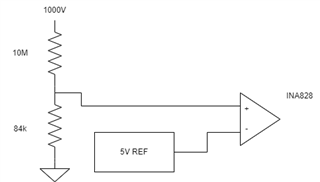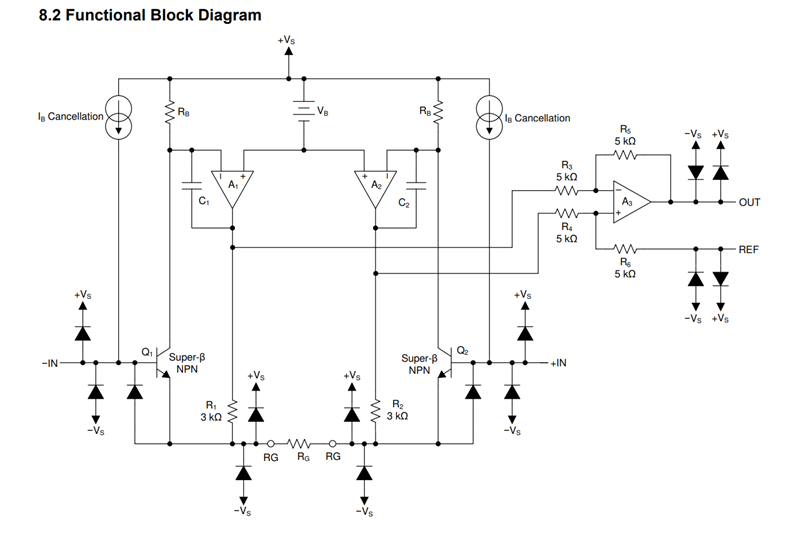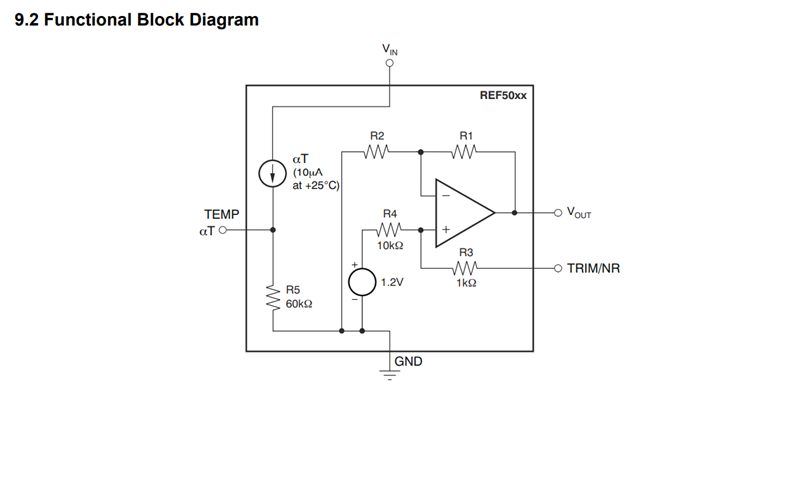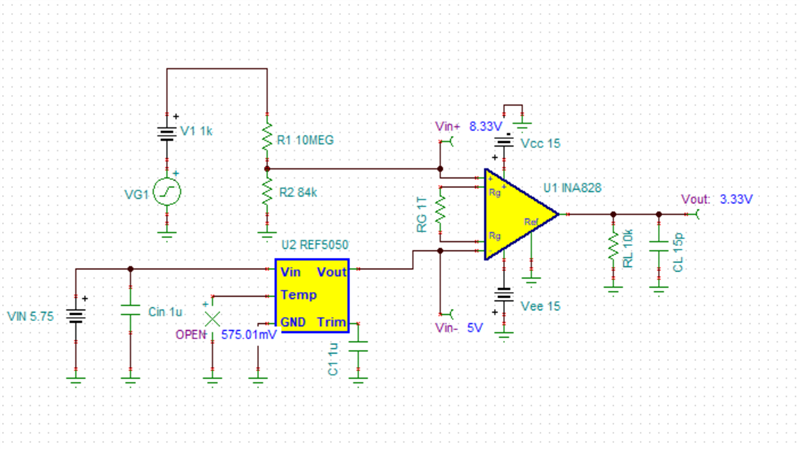Other Parts Discussed in Thread: REF5050
Tool/software:
Hi all,
I am unsure how to handle the return path of bias current or if it is necessary.

Here is how my input stage looks:

As far as I can tell there needs to be a path to ground for both inputs. The non-inverting input has a path through the 84k albeit the inverting input doesn't.
1) Do I need to add a resistor to ground at the output of the 5V ref? I'll be using REF5050
2) Is there a sufficient path through the 84k for the non inverting input?
Additionally, I understand that the Darlington pair at the input will draw a current to bias the transistor, this will be drawn from the circuit attached to the input, I just dont quite understand why there isnt an internal path.
3) Is this dependent on what is connected to the input and it's source impedance?
It is also very interesting that their is an input bias current cancelling current source to provide a base bias current.
Lastly I have watched the precision labs videos and read a few app notes but cant seem to figure it out. Any assistance will be appreciated.






